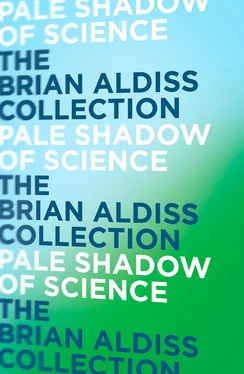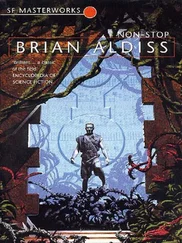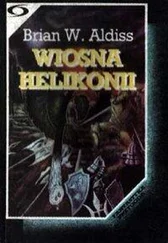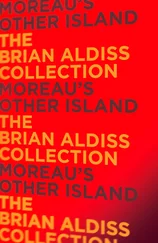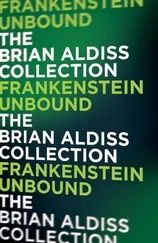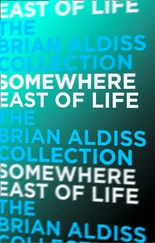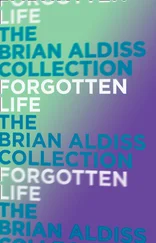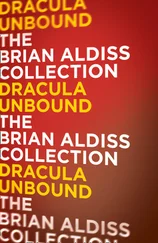Brian Aldiss - Pale Shadow of Science
Здесь есть возможность читать онлайн «Brian Aldiss - Pale Shadow of Science» — ознакомительный отрывок электронной книги совершенно бесплатно, а после прочтения отрывка купить полную версию. В некоторых случаях можно слушать аудио, скачать через торрент в формате fb2 и присутствует краткое содержание. Жанр: unrecognised, на английском языке. Описание произведения, (предисловие) а так же отзывы посетителей доступны на портале библиотеки ЛибКат.
- Название:Pale Shadow of Science
- Автор:
- Жанр:
- Год:неизвестен
- ISBN:нет данных
- Рейтинг книги:5 / 5. Голосов: 1
-
Избранное:Добавить в избранное
- Отзывы:
-
Ваша оценка:
- 100
- 1
- 2
- 3
- 4
- 5
Pale Shadow of Science: краткое содержание, описание и аннотация
Предлагаем к чтению аннотацию, описание, краткое содержание или предисловие (зависит от того, что написал сам автор книги «Pale Shadow of Science»). Если вы не нашли необходимую информацию о книге — напишите в комментариях, мы постараемся отыскать её.
Pale Shadow of Science — читать онлайн ознакомительный отрывок
Ниже представлен текст книги, разбитый по страницам. Система сохранения места последней прочитанной страницы, позволяет с удобством читать онлайн бесплатно книгу «Pale Shadow of Science», без необходимости каждый раз заново искать на чём Вы остановились. Поставьте закладку, и сможете в любой момент перейти на страницу, на которой закончили чтение.
Интервал:
Закладка:
Despite the regime of starvation and ordeal-by-ocean, I do not recall anyone being ill at St Paul’s. There was none of this namby-pamby Jane Eyre stuff of dying of consumption. That would have been frowned upon.
Winters were harder to get through than summers. The greatest deprivation was loss of toys. Bullying and fighting remained as recreation, but I developed alternatives of my own.
One was the making of mazes. Throughout my three years’ incarceration at St Paul’s, my mazes became bigger and more elaborate. To be caught in one of them was to wander for hours in a tedium of bafflement. Yet they were popular, possibly because that tedium, volunteered upon, was preferable to the larger tedium which contained us.
I also made books. These were mainly notebooks with shiny red covers, bought from Miss Abigail for three-ha’pence. I stuck pictures in them, or wrote stories about enormous square machines which took people to the Moon, to their profit. A treasured microscope was permitted at school, since it was ‘scientific’; happy hours were spent poring down its tube, sketching things twitching in a drop of pond water or wild-life moving on someone’s hair. These sketches went into books.
A rival to the popularity of the microscope by day was the kaleidoscope by night. I smuggled a small pocket kaleidoscope back to St Paul’s, and a torch. Homesickness was worst at night. It could be conquered by snuggling down into the bed and shining the torch up the kaleidoscope. Hours were spent over long winter nights, watching the tumbling patterns of colour. The pattern never repeated, one’s eye never wearied.
We also traded cigarette cards. More esoteric were the adhesive pictures to be collected from penny bars of Nestlé’s milk chocolate. These were divided into various categories, such as birds (a bit boring), machines (good), famous explorers (okay, especially Mungo Park, because of his funny name), and prehistoric monsters (best of all). Another point of interest was that Nestlé’s – presumably in the cause of a rapidly disintegrating world peace – printed the text in English and Esperanto.
Several of us were interested in the idea of Esperanto. Latin was boring, because dead, but Esperanto was of the present, an invented language. For a penny, one could buy a special Nestlé’s album in which to stick the pictures. There was more Esperanto. We set ourselves to learn it. Progress was rapid on some fronts, since the Esperanto for Brontosaurus is Brontosauro.
A child’s world in the thirties was not knee-deep in dinosaurs, as is the world of the enviable child today. How can any child be miserable when Hanna-Barbera throws the beasts at you in full animation almost every week-day and twice on Sundays? Time was when you had to hunt to turn up a dinosaur in black-and-white. I slowly acquired works of reference. Particularly valued was A Treasury of Knowledge , which my father had from the Daily Mail by clipping out coupons.
I began to feel I knew something. It was an illusion, but a strong one, and during my later days at St Paul’s I gave lectures on Prehistoric Monsters for one penny per attendee. Nobody ever stumped up, as far as I remember, but at least the charge stood as a kind of guarantee of everyone’s seriousness. My pupils took notes and had to draw a diplodocus every week (side view only – nobody had seen a diplodocus from the front in those days, not even Nestlé’s).
Dramatic distractions were few. The best was when brave Tom, our head boy, decided he had had enough of the insufferable bootboy. One dull Saturday afternoon, when we were kicking our heels in the classroom, the bootboy was invited up, and Tom told him to fight if he was not a coward. It was done in the best traditions of English boys’ school stories. Tom and the bootboy took off their jackets, rolled up their sleeves, brandished their fists, and set to.
It was a desperate conflict. The bootboy was much bigger and thicker than Tom. But Tom had made up his mind. They slammed at each other furiously. The fight carried through to the landing, and then to the narrow, winding stair. With a final flurry of blows, Tom knocked the bootboy down the last few steps. He fell backwards to the floor, his mouth bloodied, and lay looking up at us. Tom flung his jacket down at him. He grabbed it and slunk away.
The weeks of our incarceration passed, Hitler grew bolder. Echoes of that larger world reached our backwater. We had a German-Jewish boy whom we called Killy-Kranky. He was lively and comic and popular because he taught us German swear-words and insults. ‘Du bist eine alte Kamel!’ was, we were assured, a terribly rude thing to say. We treasured the knowledge; I at least have never forgotten it, my first sentence in German.
Poor Killy-Kranky! His parents disappeared. He had to stay on at school in the holidays. One day in the summer holiday, my father drove our family past St Paul’s. There, in a corner of the immense field, stood Killy-Kranky, gazing out across the wire fence at liberty.
‘Look, there’s Killy-Kranky!’ I exclaimed. ‘Can I go and speak to him, Dad?’
‘What do you want to say to him?’ my father asked, contemptuously. Of course it was one of those adult questions which cannot be answered. We sped on our way.
After the beginning of one summer term, an Italian drove up St Paul’s shingle-strewn drive in a big car. He was tall, bronzed, elegant, well dressed. He came with Mr Fangby to speak to us in the classroom. We stuttered or were silent. He spoke excellent English and smelt of perfume. With him was his little son, aged five. The son was going to stay with us while his father went back to Italy, to resolve a few problems.
I still remember seeing that man embrace his son in the drive, squatting on his heels to do so. He gave him a child’s paper – probably Chatterbox – and kissed him fondly. Then he drove away.
We were so cruel to that boy. He wore a little blouse, with braces under it. This was cause for endless amusement. We teased him about it, about everything. We ran away with his Chatterbox , which he tried always to keep clutched to him, a symbol of his father. We excelled in being unpleasant. We made his life a misery. We made his every day a torment.
Why did we do it? Our triumph over the child was the most awful thing about St Paul’s. Years later, as an adult, I was wracked with guilt about our treatment of that Italian-Jewish child whose name eludes me. Why had we no compassion? Was it because we recognized in his father a civility superior to ours? Was it the barbarity of the Anglo-Saxon way of life? Or was it something more basic, more cruel, in human behaviour?
The child’s only refuge was Legge, the other outcast among us. Legge’s popularity after the duckpond incident had not lasted. Tom had fought and beaten him, too. Unlike the bootboy, Legge could not escape, except to the upper branches of the apple trees. There he took the Italian boy, hauling him up like a gorilla with young. There they sat. Waiting for end of term and a release from misery.
Next term, the Italian boy did not reappear. My remorse did not develop till some years later, when I started to comprehend the world from an adult viewpoint. Compassion springs from a position of some security.
The assistant master, Mr Noland, was sacked. He went out and got drunk one night. Next morning, he refused to leave his bed. Fangby sent Tom to Noland’s room to command him to come down. The answer was a rude one. So Noland left at the end of the week. There were those who hung out of the window and cried openly as he drove off in his backfiring blue car. Those who had almost drowned at his hands experienced a certain relief.
It is easy to believe now that St Paul’s was more unbearable for adults – perhaps even for Fangby – than for its principal victims, the boys. Perhaps the rule applies to all prisons.
Читать дальшеИнтервал:
Закладка:
Похожие книги на «Pale Shadow of Science»
Представляем Вашему вниманию похожие книги на «Pale Shadow of Science» списком для выбора. Мы отобрали схожую по названию и смыслу литературу в надежде предоставить читателям больше вариантов отыскать новые, интересные, ещё непрочитанные произведения.
Обсуждение, отзывы о книге «Pale Shadow of Science» и просто собственные мнения читателей. Оставьте ваши комментарии, напишите, что Вы думаете о произведении, его смысле или главных героях. Укажите что конкретно понравилось, а что нет, и почему Вы так считаете.
